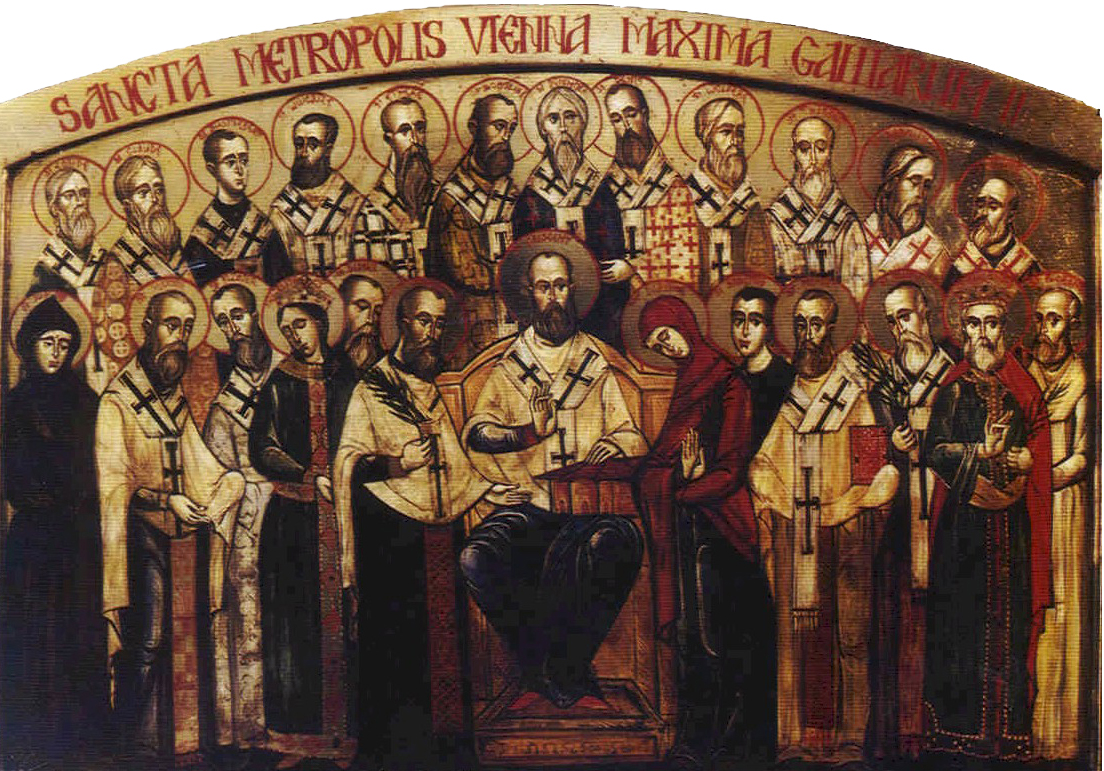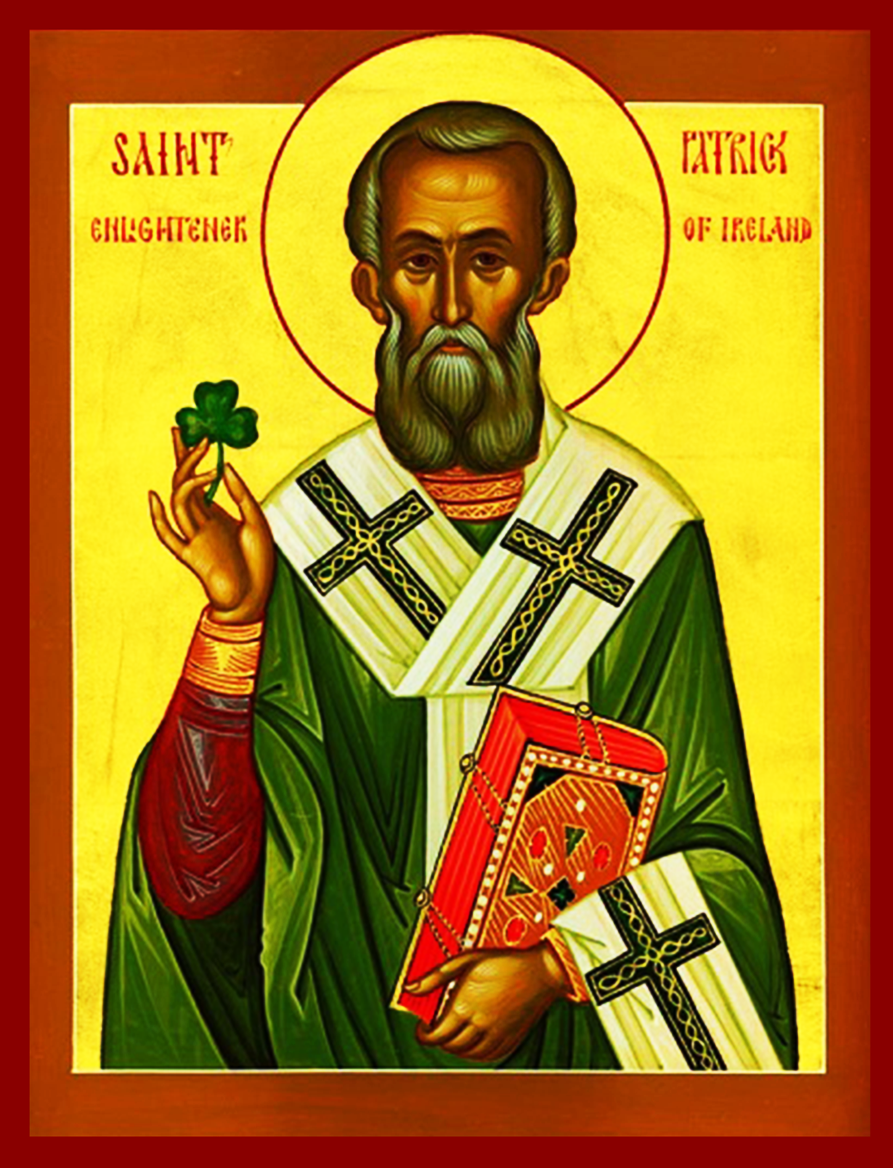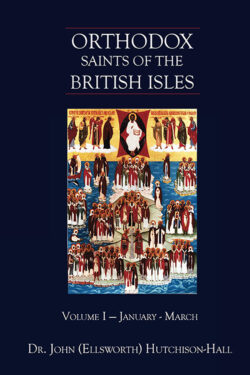
Orthodox Saints of the Pre-Schism
See of Rome
30th March (NS) — 17th March (OS) 2025
AGRICOLA (AGRELE, AREGLE), an ascetic who served as eighth Bishop of Châlon-sur-Saône in Burgundy. St. Agricola was known for his concern for the spiritual well-being of his flock and the orderly performance of services. St. Gregory of Tours (17th November) wrote of his asceticism. St. Agricola reposed in 580 at the age of eighty-three.
ALEXANDER and THEODORE, (Date Uncertain), earlier hagiographers have left us extremely limited information on these two saints based upon manuscripts no longer extant. They seem to have been martyrs in Rome, and it is even possible that Alexander was a bishop and Theodore his deacon.
GERTRUDE of NIVELLES, the daughter of Mayor of the Palace of Austrasia, Pepin of Landen (†640) and St. Ida (8th May), and sister of St. Begga (17th December). Following the repose of Pepin, St. Ida founded the double Abbey of Nivelles for herself and her daughter. Some state that St. Gertrude served as the Abbess at St. Ida’s insistence, whether or not this is correct, St. Gertrude was either twenty or twenty-one years of age when she became Abbess. At the age of thirty, St. Gertrude resigned in favour of her niece St. Wilfetrudis (23rd November), spending the rest of her life in prayer and contemplation. St. Gertrude reposed at the age of thirty-three in 659.
PATRICK (PÁDRAIG) of IRELAND, our father among the Saints Patrick of Ireland, Bishop of Armagh, and Enlightener of Ireland, was born a Briton. Captured and brought to Ireland as a slave, he escaped and returned home. Later he returned to Ireland, bringing Christianity to its people. Although St. Patrick achieved remarkable results in spreading the Gospel, he was not the first or only missionary in Ireland, but it was St. Patrick who had the greatest influence and success in preaching the Gospel of Christ. Therefore, he is known as “The Enlightener of Ireland”.
Troparion of St. Patrick — Tone III
Holy Bishop Patrick,
Faithful shepherd of Christ’s royal flock,
You filled Ireland with the radiance of the Gospel:
The mighty strength of the Trinity!
Now that you stand before the Saviour,
Pray that He may preserve us in faith and love!
Kontakion of St. Patrick — Tone IV
From slavery, you escaped to freedom in Christ’s service:
He sent you to deliver Ireland from the devil’s bondage.
You planted the Word of the Gospel in pagan hearts.
In your journeys and hardships, you rivalled the Apostle Paul!
Having received the reward for your labours in heaven,
Never cease to pray for the flock you have gathered on earth,
Holy Bishop Patrick!
St. Patrick is often depicted holding a shamrock, or with snakes fleeing from him. He used the shamrock to illustrate the doctrine of the Holy Trinity; its three leaves growing out of a single stem helped him to explain the concept of one God in three Persons. It is commonly accepted that the story of St. Patrick driving all the snakes out of Ireland has no basis in fact.
St. Patrick reposed on 17th March, though the exact year is a matter of some speculation, with dates ranging from 461 to 493. The various accounts of his last days are most likely legend, and it had been said that the place of his burial was unknown, though St. Columba of Iona (9th June) says the Holy Spirit revealed to him that St. Patrick was buried at the site of his first church in Saul, Co. Down, and a granite marker was placed at his traditional grave site in Downpatrick 1899.
Get your copy of Orthodox Saints of the British Isles today.
Available at Amazon or your favourite e-bookstore.
CLINIUS, (Date Unknown), a Greek monk at the Abbey of Monte Cassino, and later Abbot of St. Peter's near Pontecorvo in Lazio, Italy.
FERGUS, (Sixth Century), he was a Bishop of Downpatrick in Co. Down in Ireland. Though he has always been held in great veneration, the details of his life are uncertain, and it is even possible that he was the same man as St. Fergus of Scotland (27th November), who flourished in the eighth century
IRENE of ROME, the widow of St. Castulus of Rome (26th March). St. Irene went to collect St. Sebastian's (20th January) body for burial, and found that he was still, barely, alive and brought him back to her home where she nursed him back to health. St. Irene also tried, unsuccessfully, to talk St. Sebastian into leaving Rome.
MAMERTINUS, a monk, and later Abbot of the Monastery of SS. Cosmas and Damian in Auxerre, in present-day Burgundy, France. St. Mamertinus reposed circa 462.
OSBURGH (OSBURGA), (Eleventh Century), an Abbess, and according to some sources the first of the convent founded at Coventry by King Cnut. There are no particulars about her extant.
PASTOR, reputed to have been Bishop of Orléans at some point in the sixth century. Though St. Pastor is listed in the old martyrologies, he does not appear on any lists of hierarchs of the See.
PATTO (PACIFICUS), believed to have a native of Ireland, St. Patto went to Saxony where he became abbot of a monastery, and later was consecrated Bishop of Werden in present-day Werden-Essen, Germany. St. Patto reposed circa 788.
QUIRINUS, the Roman administrator of the prison in which Pope St. Alexander I (3rd May) was confined. St. Alexander converted him and his daughter St. Balbina (31st March). However, shortly afterwards St. Quirinus was arrested, tortured, and beheaded circa 117, during the reign of Emperor Hadrian (r. 117–138).
REGULUS (RIEUL), the first Bishop of Civitas Silvanectium, Gaul (present-day Senlis, France). St. Regulus reposed circa 260.
TOLA, little is known about this saint, other than that he was originally a hermit at Tola, Co. Meath, Ireland. St. Tola built a monastery for his many disciples, and eventually was consecrated Bishop of Clonard. He is believed to have reposed circa 733.
ZOSIMUS, he entered the monastery of Santa Lucia near Syracuse in Sicily at the age of seven, and thirty years later St. Zosimus was made Abbot. Roughly two decades later he was consecrated Bishop of Syracuse. St. Zosimus reposed circa 660 at the age of ninety.
Prior to the Schism the Patriarchate of Rome was Orthodox, and fully in communion with the Orthodox Church. As Saint John of Shanghai and San Francisco +1966 said “The West was Orthodox for a thousand years, and her venerable Liturgy is far older than any of her heresies”.
Details of British Saints excerpted from Orthodox Saints of the British Isles.
Details of continental saints from these sources.
In many cases there are several spelling versions of the names of saints from the British Isles. I use the Oxford Dictionary of National Biography version as the primary version with the more prevalent version in parenthesis e.g. Ceadda (Chad) of Lichfield.


